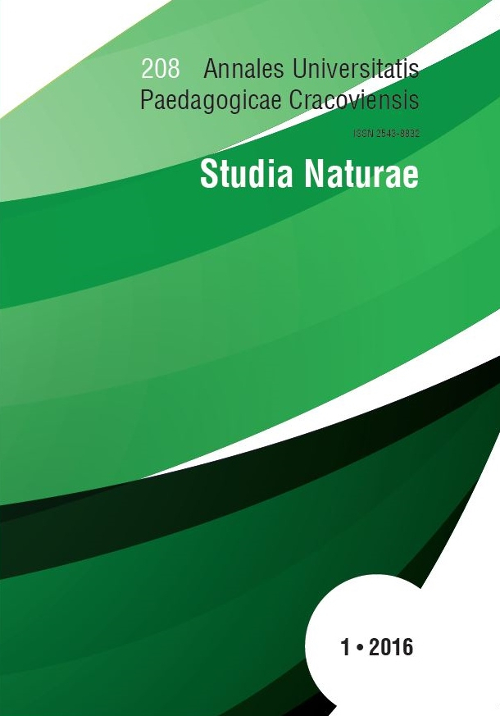Cyperus canus J.Presl & C.Presl – A traditional source of fiber, its uses, products and cultural significances among ethnic communities of Central America
Keywords:
Central America, Cyperus canus, stem, practical useAbstract
Rodzaj Cyperus L. (Cyperaceae) obejmuje od 750 do 950 gatunków. Występuje w ścisłym powiązaniu z ekologicznymi ugrupowaniami różnych gatunków traw. Gatunki z rodzaju Cyperus posiadają rozmieszczenie kosmopolityczne. Niektóre z nich są uważane za szkodliwe chwasty uprawowe. Jednak duża ich liczba znalazła zastosowanie w rolnictwie, ogrodnictwie oraz w przemyśle farmaceutycznym. Cyperus canus J.Presl & C.Presl (Cyperaceae) jest rośliną naturalną dla tropikalnej Ameryki i rozmieszczony jest od południowego Meksyku oraz Gwatemali do Kolumbii. Gatunek ten występuje wzdłuż brzegów jezior, strumieni i bagien, a czasami na skałach, na wysokości 200-1500 m n.p.m. W naturalnym środowisku jest rośliną dość rzadko spotykaną, ponieważ traktowany jest jako pospolity chwast. W Ameryce Środkowej, C. canus jest rośliną powszechnie stosowaną do produkcji dywanów, nosidełek dla dzieci, portfeli, teczek, kapeluszy i lin. W Gwatemali, pędy tego gatunku są używane do wyplatania koszy i torebek, do produktów codziennego użytku (śpiworów, sandałów, wachlarzy) oraz przygotowywania tradycyjnych potraw. W artykule tym opisano zastosowanie i procesy produkcji niektórych ważnych wyrobów wykonywanych z dzikorosnącego C. canus.
Downloads
Metrics
References
Adams, C.D. (1994). Cyperus (Cyperaceae). In: G. Davidse, M. Sousa Sánchez, A.O. Chater, F. Chiang-Cabrera (eds.), Flora Mesoamericana, 6: Alismataceae a Cyperaceae Universidad Nacional Autónoma de México. México: Missouri Botanical Garden & e Natural History Museum (London), 423–440. [In Spanish]
Bustos, M.L. (1994). Basketry and feminine world. Historia Crítica, 9, 29–35. [In Spanish]
Cajas, A., Cano, M., Guirola, C. (2009). Basketry and matting in Mesoamérica. Asociación Flaar Mesoamérica.
Castro-Ramírez, A.E. (1994). Olcuatitan and its petate activity. América Indígena, 1–2, 257–278. [In Spanish]
Castro-Ramírez, A.E., Hernández-Xolocotzi, E., Aguirre-Rivera, J.R., Engleman, E.M. (1991). Process of domestication and use of Cyperus canus by Chontales Nacajuca, Tabasco. Agrociencia (Ser. Fitociencia), 2, 7–20. [In Spanish]
Del Paso y Troncoso, F. (1986). Studies on the history of medicine in Mexico. Anales del Museo Nacional de Mexico, 3(35), 138–235.
Diego-Pérez, N. (2010). A case study: The Cyperaceae of Yucatan. In: R. Durán-García, M. Méndez-González (eds.), Biodiversity and human development in Yucatan. Mérida, Yucatán: Cicy, Ppdfmam, Conabio, Seduma, 1–496.
Eshbaugh, W.H. (1983). The useful plants of Central America. Economic Botany, 37, 68–68.
González-Mayorga, K.E. (2009). Aplicación de la fibra de tule (Cyperus canus), teñidas con el tinte extraído de la mora (Maclura tinctoria) al diseño de 3 bolsos de playa. http://webquery.ujmd.edu.sv/siab/bvirtual/BIBLIOTECA%20VIRTUAL/TESIS/03/DPA/ADTESGA0001333.pdf
Hardy Nelson, S.C. (1986). Plantas comunes de Honduras. Tegucigalpa: Editorial Universitaria. [In Spanish]
Jansen, K. (1993). Coffee and forms of production in Honduras. Revista centroamericana de economía, 14, 58–96. [In Spanish]
Jansen, K. (1998). Political ecology, mountain agriculture, and knowledge in Honduras. Amsterdam: Thela Publishers.
Larridon, I., Reynders, M., Huygh, W., Bauters, K., Van De Putte, K., Muthama Muasya, A., Boeckx, P., Goetghebeur, P. (2011). Afinities in C3 Cyperus lineages (Cyperaceae) revealed using molecular phylogenetic data and carbon isotope analysis. Botanical Journal of the Linnean Society, 167, 19–46. https://doi.org/10.1111/j.1095-8339.2011.01160.x
Lemus Herrera, L.B., Martínez, J., Girón Hernández, J.L. (2009). Caracterización organizativa, producción y comercialización de Artesanías de tule (Cyperus canus) que realiza el grupo de Mujeres artesanas del municipio de San Juan Tecuaco, Departamento de Santa Rosa, Guatemala. Universidad de San Carlos Guatemala, Guatemala. https://digi.usac.edu.gt/bvirtual/informes/puieg/INF-2009-059.pdf [In Spanish]
Ludlow-Wiechers, B., Diego-Pérez, N. (2002). Utilidad e importancia histórica y cultural de las Cyperaceae. Etnobiología, 2(1), 90–102. [In Spanish]
Magaña-Alejandro, M.A., Mendoza, M.S., Rodríguez, M.I.M. (2014). Use of medicinal plants by the villagers of Tapotzingo, Nacajuca, Tabasco, Mexico. European Scientific Journal, 3, 67–73.
Martínez, M. (1979). Catalog of common and scientific names of Mexican plants. México: Fondo de Cultura Económica.
Roquas, E. (1994). Las petateras producen más que artesanía: la economía del tule y del petate. Universidad Nacional Autónoma de Honduras. Documentos de Trabajo No. 8. Tegucigalpa: Poscae-Unah. [In Spanish]
Santana, R., Montagnini, F., Louman, B., Villalobos, R., Gómez, M. (2004). La industria de artesanías de Masaya y Masatepe, Nicaragua: demanda por materia prima de bosques tropicales. Recursos Naturales y Ambiente, 42, 77–85. [In Spanish]
Standley, P.C. (1931). The Cyperaceae of Central America. Field Museum of Natural History, Botanical series, 8, 237–292.
Standley, P.C., Steyermark, J. (1958). Cyperaceae, En Flora of Guatemala. Fieldiana: Botany, 24(1), 90–196.
The Plant List. (2013). A working list of all plant species (version 1.1). http://www.theplantlist.org
Tropicos. (2015). Missouri Botanical Garden. http://www.tropicos.org/Name/9904590
Tucker, G.C. (1983). The taxonomy of Cyperus (Cyperaceae) in Costa Rica and Panama. Systematic Botany Monographs, 2, 1–85.
Tucker, G.C. (1994). Revision of the Mexican species of Cyperus (Cyperaceae). Systematic Botany Monographs, 43, 1–213.

